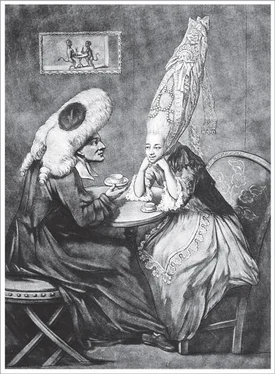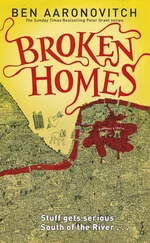Bill Bryson - At Home
Здесь есть возможность читать онлайн «Bill Bryson - At Home» весь текст электронной книги совершенно бесплатно (целиком полную версию без сокращений). В некоторых случаях можно слушать аудио, скачать через торрент в формате fb2 и присутствует краткое содержание. Жанр: Старинная литература, на английском языке. Описание произведения, (предисловие) а так же отзывы посетителей доступны на портале библиотеки ЛибКат.
- Название:At Home
- Автор:
- Жанр:
- Год:неизвестен
- ISBN:нет данных
- Рейтинг книги:4 / 5. Голосов: 1
-
Избранное:Добавить в избранное
- Отзывы:
-
Ваша оценка:
- 80
- 1
- 2
- 3
- 4
- 5
At Home: краткое содержание, описание и аннотация
Предлагаем к чтению аннотацию, описание, краткое содержание или предисловие (зависит от того, что написал сам автор книги «At Home»). Если вы не нашли необходимую информацию о книге — напишите в комментариях, мы постараемся отыскать её.
At Home — читать онлайн бесплатно полную книгу (весь текст) целиком
Ниже представлен текст книги, разбитый по страницам. Система сохранения места последней прочитанной страницы, позволяет с удобством читать онлайн бесплатно книгу «At Home», без необходимости каждый раз заново искать на чём Вы остановились. Поставьте закладку, и сможете в любой момент перейти на страницу, на которой закончили чтение.
Интервал:
Закладка:
• CHAPTER XIX •
THE ATTIC
I
In the eventful summer of 1851, while crowds flocked to the Great Exhibition in London and Thomas Marsham settled into his new property in Norfolk, Charles Darwin delivered to his publishers a hefty manuscript, the result of eight years of devoted inquiry into the nature and habits of barnacles. Called A Monograph of the Fossil Lepadidae, or, Pedunculated Cirripedes of Great Britain , it doesn’t sound like the most diverting of works, and wasn’t, but it secured his reputation as a naturalist and gave him, in the words of one biographer, “the authority to speak, when the time was ripe, on variability and transmutation”—on evolution, in other words. Remarkably, Darwin hadn’t finished with barnacles yet. Three years later he produced a 684-page study of sessile cirripedes and a more modest companion work on the barnacle fossils not mentioned in the first work. “I hate a barnacle as no man ever did before,” he declared upon the conclusion of the work, and it is hard not to sympathize.
Fossil Lepadidae was not a huge seller, but it did no worse than another book published in 1851—a strange, mystically rambling parable on whale hunting, called simply The Whale . This was a timely book since whales everywhere were being hunted to extinction, but the critics and buying public failed to warm to it, or even understand it. It was too dense and puzzling, too packed with introspection and hard facts. A month later the book came out in America with a different title: Moby-Dick . It did no better there. The book’s failure was a surprise because the author, thirty-two-year-old Herman Melville, had enjoyed great success with two earlier tales of adventure at sea, Typee and Omoo. Moby-Dick , however, never took off in his lifetime. Nor did anything else he wrote. He died all but forgotten in 1891. His last book, Billy Budd , didn’t find a publisher until more than thirty years after his death. Although it is unlikely that Mr. Marsham was acquainted with either Moby-Dick or Fossil Lepadidae , both reflected a fundamental change that had lately overtaken the thinking world: an almost obsessive urge to pin down every stray morsel of discernible fact and give it permanent recognition in print. Fieldwork was now all the rage among gentlemen of a scientific bent. Some went in for geology and the natural sciences. Others became antiquaries. The most adventurous of all sacrificed homely comforts and often years of their lives to explore distant corners of the world. They became—a new word, coined in 1834— scientists .
Their curiosity and devotion were inexhaustible. No place was too remote or inconvenient, no object unworthy of consideration. This was the era in which the plant hunter Robert Fortune traveled across China disguised as a native gathering information on the growing and processing of tea, when David Livingstone pushed up the Zambezi and into the darkest corners of Africa, when botanical adventurers combed the interiors of North and South America looking for interesting and novel specimens, and when Charles Darwin, just twenty-two years old, set forth as a naturalist on the epic voyage that would change his life, and ours, in ways that no one could then begin to imagine.
Almost nothing Darwin encountered during the five years of the voyage failed to excite his attention. He recorded so many facts and acquired such a wealth of specimens that it took him a decade and a half just to get through the barnacles. Among much else, he collected hundreds of new species of plant, made many important fossil and geological discoveries, developed a widely admired hypothesis to explain the formation of coral atolls, and acquired the materials and insights necessary to create a revolutionary theory of life—not bad going for a young man who, had his father had his way, would instead now be a country parson like our own Mr. Marsham, a prospect Darwin dreaded.
One of the ironies of the Beagle voyage was that Darwin was engaged by Captain Robert FitzRoy because he had a background in theology and was expected to find evidence to support a biblical interpretation of history. In persuading Robert Darwin to let Charles go, Josiah Wedgwood had been at pains to stress that “the pursuit of natural history … is very suitable to a Clergyman.” In the event, the more Darwin saw of the world, the more convinced he became that Earth’s history and dynamics were vastly more protracted and complicated than conventional thinking allowed. His coral atolls theory, for one, required a passage of time far beyond any allowed by biblical timescales, a fact that infuriated the devout and volatile Captain FitzRoy.
Eventually, of course, Darwin devised a theory—survival of the fittest, as we commonly know it; descent with modification, as he called it—that explained the wondrous complexity of living things in a way that didn’t require the intervention of a deity at all. In 1842, six years after the end of his voyage, he sketched out a 230-page summary outlining the theory’s principal elements. Then he did an extraordinary thing: he locked it away in a drawer and kept it there for the next sixteen years. The subject, he felt, was too hot for public discussion.
Long before Darwin came along, however, people were already finding things that didn’t accord with orthodox beliefs. One of the first such finds, in fact, was just a few miles down the road from the Old Rectory in the village of Hoxne, where in the late 1790s a wealthy landowner and antiquary named John Frere discovered a cache of flint tools lying alongside the bones of long-extinct animals, suggesting a coexistence that wasn’t supposed to happen. In a letter to the Society of Antiquaries in London, he reported that the tools were made by people who “had not the use of metals … [which] may tempt us to refer them to a very remote period indeed.” This was an exceedingly keen insight for the time—too keen, in fact, and it was almost completely ignored. The secretary of the society thanked him for his “curious and most interesting communication,” and, for the next forty years or so, that was the end of the matter.*
But then others began finding tools and ancient bones in puzzling proximity. In a cave near Torquay in Devon, Father John MacEnery, a Catholic priest and amateur excavator, uncovered more or less incontrovertible evidence that humans had hunted mammoths and other creatures now extinct. MacEnery found this idea so uncomfortably at odds with biblical precepts that he kept his findings to himself. Then a French customs officer named Jacques Boucher de Perthes found bones and tools together on the Somme plain and wrote a long and influential work, Celtic and Antediluvian Antiquities , which attracted international attention. At much the same time, William Pengelly, an English headmaster, reexamined MacEnery’s cave and another in nearby Brixham and announced the findings that MacEnery was too distraught to share. So by midcentury it was becoming increasingly evident that Earth possessed not just a lot of history but also what would come to be known as prehistory, though that word wouldn’t be coined until 1871. It is telling that these ideas were so radical that there weren’t yet even words for them.
Then in the early summer of 1858, from Asia, Alfred Russel Wallace famously dropped a bombshell into Darwin’s lap. He sent him the draft of an essay, “On the Tendency of Varieties to Depart Indefinitely from the Original Type.” It was Darwin’s own theory, innocently and independently arrived at. “I never saw a more striking coincidence,” Darwin wrote. “If Wallace had my manuscript sketch written out in 1842, he could not have made a better short abstract.”
Читать дальшеИнтервал:
Закладка:
Похожие книги на «At Home»
Представляем Вашему вниманию похожие книги на «At Home» списком для выбора. Мы отобрали схожую по названию и смыслу литературу в надежде предоставить читателям больше вариантов отыскать новые, интересные, ещё непрочитанные произведения.
Обсуждение, отзывы о книге «At Home» и просто собственные мнения читателей. Оставьте ваши комментарии, напишите, что Вы думаете о произведении, его смысле или главных героях. Укажите что конкретно понравилось, а что нет, и почему Вы так считаете.












